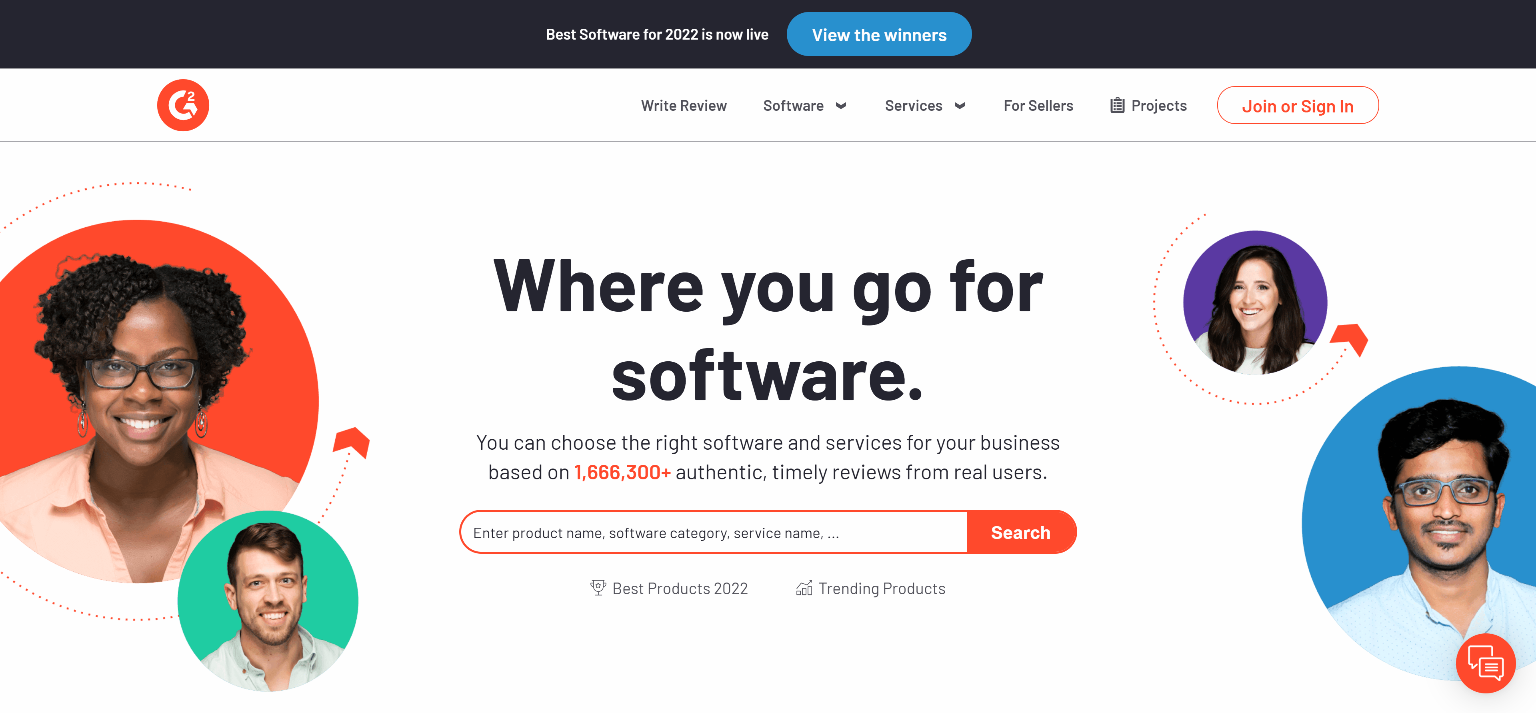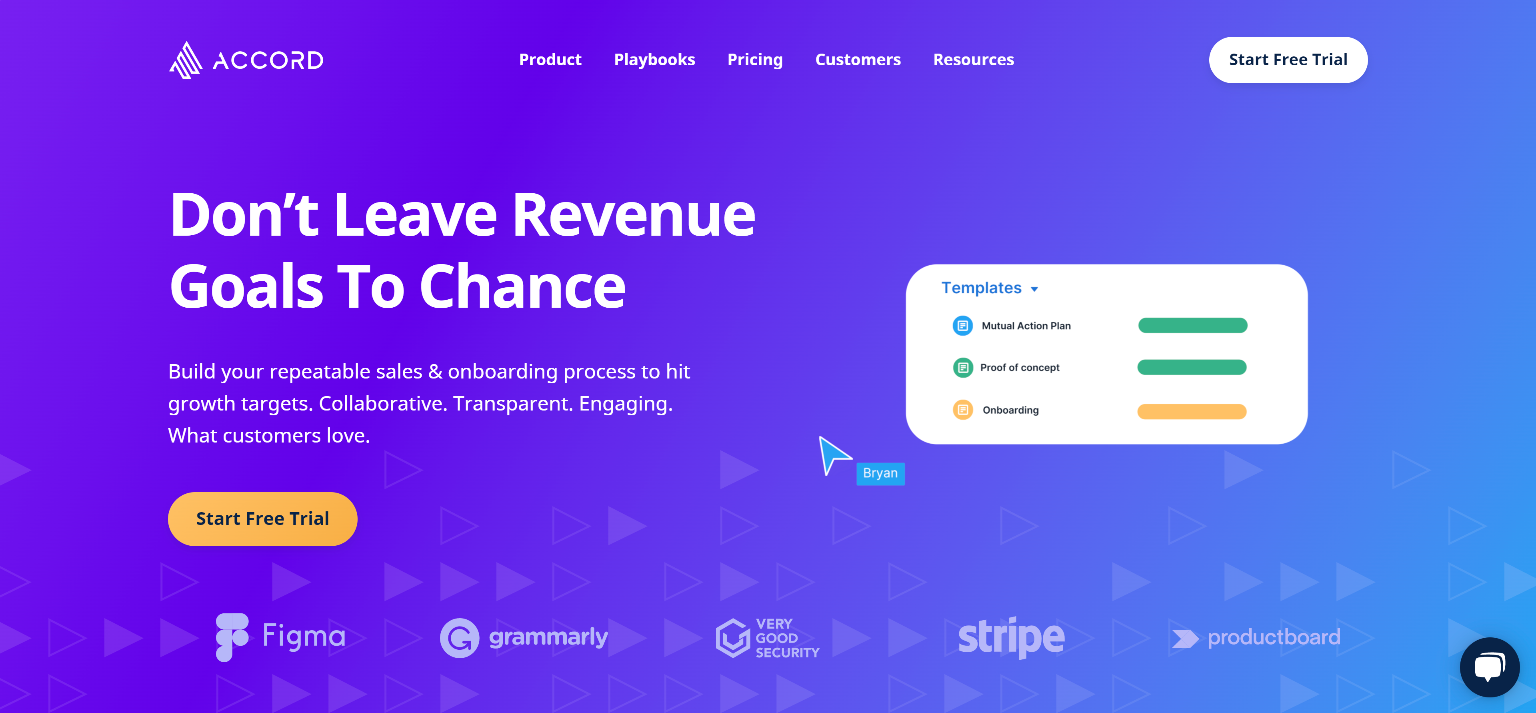Typical SaaS Sales Process in 2022 [Plus Tips to Reduce Sales Cycle Length]

CEO, Co-Founder
The B2B SaaS sales process has changed considerably over the past decade.
With nearly half of today’s buyers between the ages of 25 to 35 years old, this younger demographic prefers to act independently and do research at their own pace.
Gone are the days of the traditional sales cycle where the salesperson would court the buyer through a series of phone calls, meetings and demos.
At the same time, as buyers’ preferences have changed, product-led growth (PLG) has emerged as an important sales motion in the B2B SaaS space. PLG is a process by which prospects explore the product on their own – educating themselves on a product without the guidance of a salesperson.
As a result, SaaS companies have had to shift their sales processes and go-to-market (GTM) strategies to stay competitive in the end-user era.
In this article, we outline each stage involved in the average SaaS sales cycle and provide tips to increase sales velocity of each stage. Although every B2B SaaS sales cycle will vary based on the company size, product complexity and buyer persona, these are general suggestions that can be applied to most scenarios.
What is a SaaS sales process?
A SaaS sales cycle is the process of selling web-based or cloud software to customers. This can involve selling to net new prospects or to existing customers by upselling features or adding licenses.
The length of a typical SaaS sales process can vary depending on the prospect, product and annual contract value (ACV). When a SaaS product has a high price point or involves extensive resources for implementation, the sales process requires more thought, attention and nurturing.
According to HubSpot, a typical SaaS sales cycle is 84 days: “For an ACV of less than $5K, the cycle will last around 40 days. If the ACV is upwards of $100K, the cycle will last 170 days — around five and a half months.”
6 stages of a typical SaaS sales process
Here are the 6 common stages of a B2B SaaS sales process, as well as several tips to speed up each stage. Although there may be some variation depending on industry, product and customer type, these stages and tips are generally applicable.
Stage 1: Prospecting
Prospecting is when your SaaS sales and marketing team identifies and begins to communicate with potential customers who would benefit from your product. Prospecting is research-focused and uses data from a variety of sources to zero in on prospects.
Tips for prospecting:
While the definition of prospecting is simple, undertaking it effectively takes a little more effort. Here are some tips to speed up prospecting:
- Hone in on your ideal customer profile (ICP): Collect qualitative and quantitative data about your prospects and customers early in your prospecting. This will help you filter out which customers are most successful and which are not, and will help shape your user persona.
Data collected should include which industries and demographics are bringing in the most revenue and interest to your company.
It’s no surprise that those who are most successful will help shape your ICP, and ultimately increase the chance of moving prospects through the sales funnel.
- Bring in subject matter experts: Subject matter experts are exactly what they sound like – people who are experts in the subject matter, products or industry particular to your prospects.
Subject matter experts can be brought in either as consultants or on a full-time employee basis to help you understand your prospects, their preferred communication style, needs and pain points, and when and where it’s best to reach them.
For example, a subject matter expert who knows the ins and outs of software development may help you discover that a phone call won’t be your best way to sell to developers.
- Introduce your product early in the buying cycle: Always assume your prospects are already doing their own research on your product. They have networks they can access, Slack communities, and are scrolling through reviews sites like G2 and Capterra.

The key here is to try to be the first one to get in front of them. First impressions are always important, and you want that impression to be yours.
A simple way to do this is make videos, gifs or interactive demos of your product using presales software and share them widely. These all give your prospects an accurate taste of your product, plus the opportunity to access information right from the source.
Stage 2: Qualifying
Qualifying means assessing if a lead is an appropriate fit for your product. Qualifying is an important step for determining which prospects will move successfully through the sales process and ultimately become long-term customers.
The process starts with a pool of leads you’ve gathered through prospecting and it usually involves a product demo.
The biggest mistake you can make during the qualifying stage is making a prospect wait too long to see your product. In our 2022 State of the Product Demo Report, the average response time to a demo request is 3+ days.
In the B2C world, customers expect instant access to your product. This trend is carrying over to B2B too, and prospects don’t want to wait several days before they can speak to a business development representative (BDR) to get qualified.
Tips for qualifying:
Here are some tips for successful qualifying, faster:
- Make your sales team readily available: Prospects will have questions and they don’t have time to wait for slow answers.
Make sure your sales team is available to speak with prospects right away. It can be helpful to use scheduling tools like Calendly so prospects can easily get in touch with your sales reps on their own terms.

- Send materials early: Send interactive product demos or videos before your sales call to help educate your prospect. This allows them to come to a demo or sales call prepared and qualify themselves further.
When Xometry began utilizing interactive demos, they found: “Prospects that come inbound through a [demo] have a much better understanding of our product and have been far more qualified...The sales cycle for these opportunities is about half as long as our standard cycle.”
- Consider a blended discovery and demonstration approach: Depending on your company size, you may want to consider a hybrid approach with your prospects. This means qualifying prospects and showing them the product all in one call.
If your prospect has had more product access earlier in the cycle (via product tours, videos, free trials, etc.), the qualification process is significantly shortened.
You can use data collected from these product touchpoints to streamline what features might be of use to them. Then focus on selling them only those features.
Step 3: Demonstrating the product
Demonstrating the product is exactly what it sounds like: taking the time to show what your product is and what it can do for the prospect.
This doesn’t necessarily mean you need to do a full-scale demonstration. Rather, the data you’ve collected so far should help you narrow your focus. Start by hitting on their main pain points. You can layer on other features later.
Tips for demoing/presenting:
Demonstrating or presenting your product isn’t a one-size-fits-all approach. Here are some tips to help identify what will be most effective, ultimately speeding up the length of this stage:
- View your Account Executives (AEs) more as Customer Success Managers (CSMs): Assume your prospects come to the table with a lot of product knowledge – because they do. Buyers are more educated than ever before. Make sure your sales person has even more knowledge.
To do this, department silos need to be broken. Teams can work together through organization-wide product training so your sales reps become product experts.
- Keep your demos short: Your prospects’ time is limited and it’s important to respect that. In our 2022 State of the Product Demo Report, we found the standard demo was 30 minutes to an hour in length.
Honor your prospects’ time, and keep your demos short and to the point.
- Share your pricing on the first call: Price shouldn’t be something to hide. Being transparent about pricing is a good way to develop trust with your prospects.
If a prospect feels like they’re partnering with you from the beginning, they’re also more likely to champion your product.
👉 Want to send the perfect post demo follow-up email? We've got you covered.
Step 4: Negotiating
Negotiating is when your prospect is nearly ready to buy, but first they want to ensure they’re getting the best price and service possible. At this stage, sales reps may consider showcasing a few more features they know will help the prospect in the future.
Tips for negotiating:
Negotiating is a back and forth process that ideally ends with an agreement both parties are happy with. Here are a few tips to make that process go easier and faster:
- Gauge the conversation based on your prospects’ cues: At the end of the day, negotiating is about selling. And selling requires a certain level of understanding of body language and communication. The goal is to read the room, while also promoting confidence and reassuring your prospect.
Some skills to master include mirroring, labeling emotions, avoiding “yes/no” questions, calibrating your questions and expecting a hard bargain. To learn more about these, a good read is: How to Become a Better Negotiator (Never Split the Difference).
- Facilitate buy-in from decision makers: After you do a demonstration, leave behind a video or interactive demo so your prospects and champions can help other important decision makers see the value your product offers.
Enabling your champions to “sell” internally builds trust with your brand across the organization and helps to establish lasting relationships.
Step 5: Closing
Closing the sale is the process during which your sales reps offer their final pitch, answer any remaining questions and, ultimately, land the customer.
Tips for closing:
Although closing the sale is exciting, it can take some skill to get there. Here are some tips for a successful (and faster) sales closing:
- Be prepared for rejection: It’s extremely rare that a sales person will encounter all “yeses” from their prospects. In fact, Close reports that 80% of prospects say that they said “no” four times before they finally said “yes.”
Be prepared for rejection because it’s probably going to happen. When it does, don't get too discouraged and see it as an opportunity to learn.
- Use e-sign tools: The last thing you want is for your closing to snag due to a missing signature. Be prepared with easy-to-use signature software like Docusign.

This software makes drafting, sharing and signing contracts easy. No one likes to deal with paper anymore.
Step 6: Nurturing
Just because your prospects have now become your customers, doesn’t mean the job is done. Buyers need nurturing in order to see the full value of your product and remain loyal.
Nurturing is the process of onboarding new customers, educating them and generally easing any transition or training processes.
Tips for nurturing:
There are several things you can do to make your nurturing process goes smoothly and avoid churn:
- Onboarding is key: Onboarding is essential to ensuring your customers have a seamless and delightful experience with your product. If your customers aren’t happy with your product, you may lose them in the future.
Depending on the size of your customer’s company, using onboarding tools like Accord help create mutual onboarding plans that are actionable and collaborative.

- Use an onboarding playbook: A playbook is a tool that lays the groundwork for successful onboarding. It provides direction for what actions to take, when to follow up and how to communicate with your customers.
In particular, an onboarding playbook helps your Customer Success (CS) team:- Get mutual agreement on key tasks and next steps
- Share documentation and resources in one place
- Set the customer up for long-term success
- Easily repeat the process for each new account
- Keep the education ongoing: Make sure you leave your customers with enough educational materials to help them walk new users through the product.
Ideally, you can use an interactive tool that gives customers access to all documents and videos they might need as they learn the software. Here at Navattic, we created interactive documentation to help guide new users through our platform.

Additionally, consider sending your customers product announcements, newsletters and/or webinars to keep your customers up-to-date on key features and news that’s of interest to them.